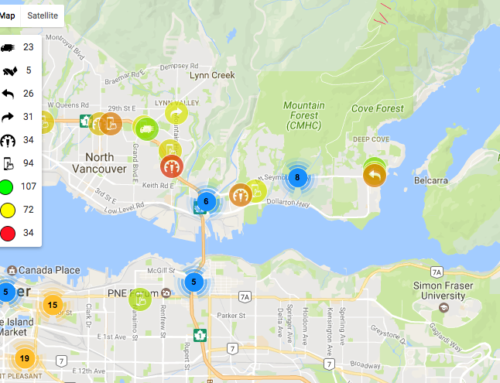RoadChek’s patented technology brings a whole new level of sophistication to the relatively new category of driving analytics and behavior analysis. Driving behavior can be influenced by several factors. Some of these are internal factors that reflect the active decisions the driver makes throughout a drive. Additionally, there are external factors (e.g. local weather, traffic, infrastructure, culture, etc.) that are taken into account to quantify a driver’s behavior. The biases these external factors can introduce are removed from the analysis. However, the driver’s reaction to external factors is an important component of behavior-based analysis and is incorporated in our analysis.
Behavioral biometrics is crucial to providing accurate driver scoring. For example, a trip with two hard braking events might indicate good, average, or poor driving performance depending on the other factors involved. To illustrate, consider two extremes: 1) a driver on a straight road with few vehicles in a region where keeping a large distance from the car ahead is typical, and 2) a driver on a busy city street with poor road layout surrounded by an aggressive driving culture. In the first case, two hard brakes is much harder to justify than in the second case. It is more likely in the second case that the driver had to brake suddenly to avoid the car that just cut in front or the pedestrian that ran across the street.
RoadChek’s patented technology takes these factors into account to provide a fair and consistent evaluation of a driver’s tendencies. The statistical performance over the entire drive is monitored in addition to looking for specific driving events. For example, a driver that continually brakes hard at every stop sign and speeds off quickly (though does not cross the thresholds set for driving events) indicates more aggressive and less efficient driving behavior than one who steadily reduces speed but may have one or two braking events in a city. Additionally, our behavior-based analytics factor in regional differences, infrastructure (e.g. mountains v. flat land), vehicle type, weather trends, and additional information to compare driving performance across different regions, environments, etc. The driver is evaluated over time to derive a deep understanding of a driver’s behavior. However, individual trips may be evaluated in the same manner to provide insight into a driver’s current trends or to distinguish between driver and passenger.
Scoring
When interpreting driving scores, there are 6 subcategories that make up the components of a user’s overall driving behavior. These fields are
- acceleration – the performance while accelerating (increasing speed)
- deceleration – the performance while decelerating (decreasing speed)
- cornering – the performance while turning
- jerk – the performance in maintaining steady acceleration or deceleration
- swerve – the performance in maintaining steady steering angles
- phone handling – a measure of how often the phone is used while driving (not counting calls on a hands-free speaker system)
The total score is comprised of all 6 of the scoring subcategories listed above. The total score measures a driver’s overall driving behavior. Higher total scores reflect safe, attentive, courteous, and eco-friendly driving.
The driving scores are further broken down into 2 major subcategory scores: cool and alert. The cool score is mainly comprised of the acceleration, deceleration, and cornering scores. It measures a driver’s handling behavior, where lower scores reflect aggressive driving and higher scores reflect calm, courteous driving. Likewise, the alert score is mainly comprised of the jerk, swerve, and phone handling scores. It describes a driver’s level of focus while driving, where lower scores reflect more distracted driving and higher scores indicate attentive driving.
RoadChek is not simply an app that determines a score via its integrated accelerometer. In fact, the app itself does not determine the score. The app sends mathematical data in an efficient chunk at the conclusion of each trip. That data is then normalized via cloud-based server algorithms that take into account, a wide range of geographic information, traffic localization and density, etc to arrive at detailed scores for each category. This process incorporates localized data from the region that even includes cultural factors, weather, street and pedestrian density and normalized flow measurements, in order to increase scoring accuracy. As one might imagine, normal traffic flow on a crowded downtown street in Mumbai is quite different that a deserted icy highway in Montana.
RoadChek raises the bar on driving behavioral analysis such that it provides results that fleet managers and business of all types can rely on for accuracy and consistency.





